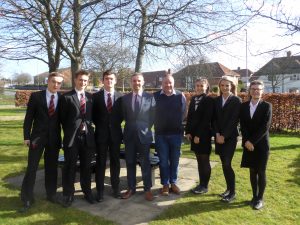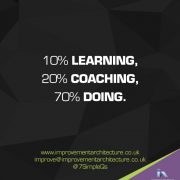70/20/10 dilemma ………of people development.
/0 Comments/in Talent Management /by Kaye CollinsHi everyone,
It has been a while since I posted – just been too busy… hope you are too!!
I often go into organisations and am shocked to see the lack of development that I see within people. Part of this is the level of delivery from some “training” providers which shocks me and the adage of you get what you pay for really does holds true (within development).
Also of concern is that the very people who are there to support development (HR, OD or similar) often are doing other “things” (through no fault of their own) and therefore ideally want the trainer to take the problem away. The stressful state within some organisations means they do not look to make their people/talent development programme the most effective it can be and believe that the solution has been found through a trainer when the issue lies way beyond that. A “sticky plaster” to a key problem and results in a further lack of responsibility on the individual and therefore further lack of engagement.
In the context of training, my view of it I am afraid is that I don’t see training as anything but a small part of people development – sorry to all my “training” peers! The truth is that if all you do is “train” someone (thinking of it as some sort of silver bullet) the likelihood of that person’s behaviours and habits changing is highly unlikely, unless it proves the lightbulb moment that they’ve needed (however given the lack of personal responsibility we see this is unlikely).
The 70/20/10 model we use within Improvement Architecture was developed from research from Michael Lombardo and Robert Eichinger from the Centre for Creative Leadership and gives the philosophy for a structured talent development cycle.
Firstly, is that the knowledge transfer (generally in the form of workshops, e-learning etc..) accounts for 10% of the learning. This is the intellectual learning (the Awareness) or the TRAINING element. The HOW TO. It is great when people write the theory of how they will adapt their learning to the business as an activity or assessment within their training, but again it sort of reminds me of an entrepreneur who keeps coming up with ideas and protecting them but never commercialising them.
Then comes the Coaching or infrastructure development or project identification within the business, which accounts for 20% of the learning, and is about how the learning is ADAPTED for use within the context of the individuals business. This cannot be done on a group basis but only on a team, or individual basis in my view. Also just as important is that the environment within the individual’s organisation needs to support the learning and development and progression through its cycle (even if it needs to change to do so…).
Finally, there comes the DOING. This is the actually implementing it within the business. We learn from the doing more than the other areas and hence why this is 70% of the learning. This can also be started in parallel with the learning (if a longer programme). I am still learning in terms of leadership after my initial programme in 1998. I am still learning in terms of process improvement (after my initial learning at the Ford School of SPC in 1993) – I don’t believe we ever get to mastery… but we can get close.
Organisations need to start recognising that all learning is about doing, not training (although this is a small key element of it). The most effective people development programme is therefore where the person has had knowledge transferred, and has taken their learning, applied it and DONE IT!! (you could take it on another step to suggest the person then just BE IT!!!). This is a journey in itself and we do need to measure the individual through all stages of this learning. This is why it takes a minimum of 12 months often in order to change a behaviour. and Return On Investment (ROI) needs to be understood at all levels of this cycle. It is not good enough for the individual to give feedback after the training session if that is where it stops. Their behaviours will not change and it is highly unlikely the business will benefit (even in the short-term).
Within Improvement Architecture we look at behaviours within three main axis; the success of leadership of performance to a purpose or strategy, the success of behavioural change in order to align with processes and execute better, and finally, the behavioural change required to better serve our customers and the triggers within the environment and culture that make these occur.
We measure these at all parts of the learning cycle;
· Feedback before, during and after the initial knowledge training,
· During the coaching and final decision-making of how this knowledge can be applied within the context of the business and measured.
· Finally at the various stages of the doing it on a carefully selected project or to carefully selected leading measures, and in parallel the progress with working on a carefully selected behaviour or two.
We specialise in the 100% not the 10 or the 30% as traditional training and coaching organisations may. We close the cycle. We measure the cycle and we guarantee development and improvement. It is about the “Show how, not the know how!!!”.
Over the coming weeks, I will look at some of the issues we have encountered and how we have developed the full cycle of talent development around these.
Please do follow us to ensure you don’t miss the future blogs.
@7SimpleQs
www.improvementarchitecture.com

Improvement Architecture
improve@improvementarchitecture.co.uk
T: 08000 248 671
Latest posts
- Caledonian Plywood -Testimonial. December 19, 2017
- Increased footfall and overall sales – The Frame House Testimonial. November 20, 2017
- Petronieos Case Study for Oil and Gas November 6, 2017
- A warm welcome to David Land, Commercial Director. October 18, 2017
- 34% Reduction in Manufacturing Costs– Mainetti Ltd. October 16, 2017


